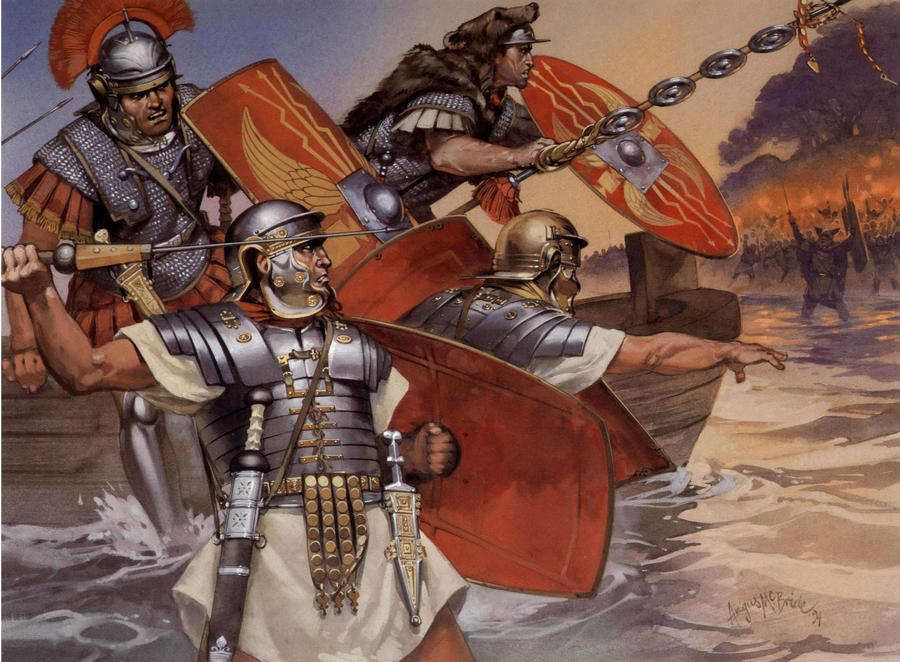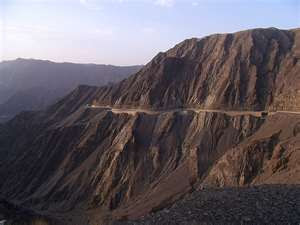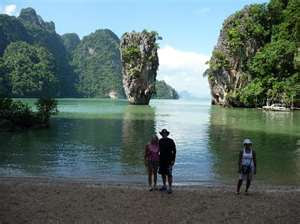In the time of the age of exploration, many European countries helped contribute to the great discoveries made. The ones who contributed the most were Spain and Portugal, but also England, France, the Netherlands, and Italy. These countries sent out ships for many reasons. One was that they wanted to find sea routes to Asia. Many cultural and scientific advancements took place there. Another reason was that they wanted to know more about the world, they also wanted fame, glory, and bragging rights. The last reason is that they wanted to spread Christianity all around the world.
New discoveries greatly impacted European nations at that time. All of the countries wanted to discover things before other countries. That created rivalry and jealousy. For example, Spain and England go into a war over already claimed land and stealing from ports. Exploration also brought back goods and precious things. A more money based economy was formed and merchants could raise the price on certain items due to the rarity of it at that time. if i was living at that time I would love to buy the new items brought back from explores and take advantage of the strong money based economy.
i think that the most important explorers were Hernan Cortes, Christopher Columbus, and Ferdinand Magellan. Cortes explored Mexico and learned about the Aztecs, which is very important. Columbus discovered America which is obviously a very important discovery. Magellan discovered that Earth was round and was first to sail all the way around the Earth which was very important because it changes the whole idea of what people thought before.
Total Pageviews
Sunday, June 5, 2011
Tuesday, May 17, 2011
Decline and Fall of the Roman Empire and How Life in Western Europe was Transformed

 There were many different aspects that contributed to the decline and fall of the Roman Empire. Rome flourished for a long time, but eventually began to fall. There is not only one answer to why Rome fell, but many different things that played different parts in the fall of the great empire. One very big thing that contributed to the fall was the economy, specifically taxes. The taxes rose so much that even the wealthy families were struggling to pay them. If the rich families were having problems paying, that meant that the poor families were having even more problems paying. Some of the poorer families who failed to pay the taxes had to be permanent inmates of the prison. The emperor saw that the economy was failing and tried to fix it by making prices stable. The merchants began to price things unfairly. They would make a very small item cost a ridiculously high price. The emperor tried to help again by setting a maximum price, but the merchants ignored the new rule. The emperor couldn’t find a solution to the failing economy. Another theory of the decline and fall was Christianity. More and more people were converting to the religion of Christianity. Once Constantine converted to Christianity, the people of the empire were even more focused on Christianity and even less focused on things such as the improving the military and inventing new things. They put all of their money into the church, and the church didn’t even help during Rome’s downfall. This caused the empire to not move forward which helped its decline and eventual fall. Disease was another contributing factor of the decline. Diseases were being spread rapidly and they did not have very many effective ways to treat them. The military was also failing and without a strong military to protect them, Rome could be taken over more easily. They could not expand their empire or protect themselves from their enemies.
There were many different aspects that contributed to the decline and fall of the Roman Empire. Rome flourished for a long time, but eventually began to fall. There is not only one answer to why Rome fell, but many different things that played different parts in the fall of the great empire. One very big thing that contributed to the fall was the economy, specifically taxes. The taxes rose so much that even the wealthy families were struggling to pay them. If the rich families were having problems paying, that meant that the poor families were having even more problems paying. Some of the poorer families who failed to pay the taxes had to be permanent inmates of the prison. The emperor saw that the economy was failing and tried to fix it by making prices stable. The merchants began to price things unfairly. They would make a very small item cost a ridiculously high price. The emperor tried to help again by setting a maximum price, but the merchants ignored the new rule. The emperor couldn’t find a solution to the failing economy. Another theory of the decline and fall was Christianity. More and more people were converting to the religion of Christianity. Once Constantine converted to Christianity, the people of the empire were even more focused on Christianity and even less focused on things such as the improving the military and inventing new things. They put all of their money into the church, and the church didn’t even help during Rome’s downfall. This caused the empire to not move forward which helped its decline and eventual fall. Disease was another contributing factor of the decline. Diseases were being spread rapidly and they did not have very many effective ways to treat them. The military was also failing and without a strong military to protect them, Rome could be taken over more easily. They could not expand their empire or protect themselves from their enemies. The life in Western Europe changes dramatically. It was very chaotic and the people there had a hard time adjusting. Cities were invaded, there were small tribes succeeding on their own instead of banding together, and there was the new idea of Christianity which although didn’t make life worse, it made it different. Religious figures became nearly as important as political figures. That is why Rome fell and how life in Western Europe dramatically changed.
Wednesday, May 4, 2011
A Doctor
Muslim doctors contributed a lot to the world. Some of those are their many hospitals, medical care systems, ambulances, remedies, and discoveries about surgery and infections. In Bagdad there were at lease 5 hospitals. The government paid for everyones medical care. They also made sure the doctors had teaching centers and the patients were separated. The remedies they found would help many doctors and the information they learned about amputation and the treatment of bacteria infections would help doctors in the future.
A Merchant
A merchant used many things to help with their navigation. They had to travel a lot, so they would use them frequently. They would use the tools that scientists provided for them. For example, accurate maps, atlases and books of maps. They would have to use these things a lot because they cannot make money without traveling and they can't travel without these tools. They did have a long term impact because we used the Muslim knowledge of these things to improve on them and create modern maps, atlases, ect. Without that, we would be very far behind.
Sunday, April 10, 2011
The Historical Relationship Between Islam, Judaism, and Christianity
 One historical relationship that is a similarity between them is that they all had to fight to get people to accept their religion and to get more people to follow their religion. They also all believe in one god, the same god actually. One difference is their different views on that god. Another difference is how they all had different starters of the religions. Muhammad started Islam, Abraham started Judaism, and Jesus started Christianity. Those are the relationships between those three religions.
One historical relationship that is a similarity between them is that they all had to fight to get people to accept their religion and to get more people to follow their religion. They also all believe in one god, the same god actually. One difference is their different views on that god. Another difference is how they all had different starters of the religions. Muhammad started Islam, Abraham started Judaism, and Jesus started Christianity. Those are the relationships between those three religions.
Thursday, April 7, 2011
Significance of the Qur'an
The Qur'an was ver significant. It was significant because it was the holy book of Islam, which makes it very sacred to that religion. Another reason it was significant was that it has all of the messages to Muhammad from God, exactly as Muhammad told his followers it was. That provides accurate information of what Muhammad told his followers which is very important.
The Life and Teachings of Muhammad
Life:
Muhammad had a very difficult life. He was part of the Hashim clan. His father died before he was born, and the clan was poor. When he was a baby, his mom sent him to live with a nomad family in the desert. While he was there, he learned about Arab traditions including, being kind to strangers, helping orphans, widows, ect. When he was 5 or 6, he went back to live with his mom. Soon after he came home, she died. Abd al-Muttalib, Muhammad's grandfather, took care of him. When he died, Muhammad was left to be raised by his uncle, Abu-Talib. After going on a trading trip with his uncle when he was 12, he grew to be a famous trader, for he was very honest. He married Khadijah when he was 25 , after managing caravans for her. They had several children. He also enjoyed praying in the mountains and one day he met the angel Gabriel. Gabriel gave him a message from God, and continued for the next 22 years. He started off by only telling his family members, but after a while a small group of Muslims formed.
Teachings:
Some of his teachings were:
-People must worship 1 God
-All believers in God were equal
-The rich should share their wealth
-Take care of orphans and poor people
-Improve status of women
Muhammad had a very difficult life. He was part of the Hashim clan. His father died before he was born, and the clan was poor. When he was a baby, his mom sent him to live with a nomad family in the desert. While he was there, he learned about Arab traditions including, being kind to strangers, helping orphans, widows, ect. When he was 5 or 6, he went back to live with his mom. Soon after he came home, she died. Abd al-Muttalib, Muhammad's grandfather, took care of him. When he died, Muhammad was left to be raised by his uncle, Abu-Talib. After going on a trading trip with his uncle when he was 12, he grew to be a famous trader, for he was very honest. He married Khadijah when he was 25 , after managing caravans for her. They had several children. He also enjoyed praying in the mountains and one day he met the angel Gabriel. Gabriel gave him a message from God, and continued for the next 22 years. He started off by only telling his family members, but after a while a small group of Muslims formed.
Teachings:
Some of his teachings were:
-People must worship 1 God
-All believers in God were equal
-The rich should share their wealth
-Take care of orphans and poor people
-Improve status of women
Life in Arabia Before (and during) the Time of Muhammad
Before Muhammad, Mecca was already a very successful city. They became very successful, trading with Yemen, Syria, and Africa. There was no central government, but it was run by a few families. Most Arabs were polytheistic before Muhammad. Tribes would often steal from each other and fought against each other. When Muhammad was alive, he brought the people more together using Islam.
Thursday, March 31, 2011
Arabian Coastal Plains
The Arabian coastal plains are anywhere between five and forty miles inland. It rains a lot there and the air is very moist. They separate the inland plateaus from the seas that surround them.
These are two examples of coastal plains.
Adaptations:
One adaptation is that the coastal plains are very good for farming.
Another is that they can take the tree's sap for myrth and frankincense.
This is an example of a coastal plain that is good for farming. You can tell it has very rich fertile soil which is very important in farming.
This is an example of tree sap getting collected, which they did a lot in the Arabian coastal plains.
These are two examples of coastal plains.
Adaptations:
One adaptation is that the coastal plains are very good for farming.
Another is that they can take the tree's sap for myrth and frankincense.
This is an example of a coastal plain that is good for farming. You can tell it has very rich fertile soil which is very important in farming.
This is an example of tree sap getting collected, which they did a lot in the Arabian coastal plains.
Arabian Mountains
The mountains of the Arabian Peninsula is what separates the deserts and the coastal plains. The climate includes wind, rain, and frost in the winter. It is usually cool because of the elevation.
These are two pictures of the Arabian mountain ranges.
Adaptations:
One is, to help them farm they created irrigation systems.
Another one is that the mountains allowed to to grow fruit such as melon and pomegranate.
This is a picture of an irrigation system
This is a picture of a pomegranate that they would grow near the mountains.
These are two pictures of the Arabian mountain ranges.
Adaptations:
One is, to help them farm they created irrigation systems.
Another one is that the mountains allowed to to grow fruit such as melon and pomegranate.
This is a picture of an irrigation system
This is a picture of a pomegranate that they would grow near the mountains.
Arabian Deserts
Arabian deserts are hot and dry and sandy. Three fourths of the Arabian Peninsula is made up of deserts. The people who live in the deserts have animals that they hers and raise. They have to live off of what their animals can provide for them and they try to trade as much as they can.
This is a picture of the Arabian desert. It is very sandy.
This is a picture of a camel on the sand of the Arabian desert.
Adaptations:
One adaptation is that people use camels to travel around the desert so they don't have to walk the whole way.
Another one is that the people changed the clothes they where. They where vert loose clothes made of cotton because of the heat, and where headdresses to protect them from sandstorms.
This is a camel, which they use a lot in the Arabian desert.
This is an example of what they would wear.
This is a picture of the Arabian desert. It is very sandy.
This is a picture of a camel on the sand of the Arabian desert.
Adaptations:
One adaptation is that people use camels to travel around the desert so they don't have to walk the whole way.
Another one is that the people changed the clothes they where. They where vert loose clothes made of cotton because of the heat, and where headdresses to protect them from sandstorms.
This is a camel, which they use a lot in the Arabian desert.
This is an example of what they would wear.
Arabian Oasis
Arabian oases are fresh water places. They occur when water gets trapped underground. They provide shade and plant life. They grew dates, peaches, and grains. One very important thing they grew was the palm tree. They also dug wells there.
Adaptations:
One adaptation is that they grew date palm trees which is a good source of food and shade.
Another is that the nomads and their animals have water which is very hard to come by in the desert area.
These two pictures are examples of Arabian oases.
This is a picture of the date palm tree they would grow there.
This is an example of a nomad and his camel at an oasis for water.
Adaptations:
One adaptation is that they grew date palm trees which is a good source of food and shade.
Another is that the nomads and their animals have water which is very hard to come by in the desert area.
These two pictures are examples of Arabian oases.
This is a picture of the date palm tree they would grow there.
This is an example of a nomad and his camel at an oasis for water.
Sunday, March 20, 2011
India Article Summary- Indian Cuisine: Healthy and Delicious
Summary:
Indian food is very nutritious. Indian food uses vegetables in a way that makes them incorporated into the food so they taste good. Some common ones are brussels sprouts, cabbage, carrots, cauliflower, celery, cucumbers, corn, eggplant, green beans, orka, peas, peppers, potatoes, radishes, spinach, squash, and tomatoes. They also have many other healthy things such as beans, whole grains, and spices. Indian food is known for their spices. They are very good for you and prevent many diseases. One more thing that is very good for you that Indians do is that they use small amounts of meat in their diet. Many are vegetarians but even those who aren't eat very small amounts of meat. Indian food cooked at home is very healthy, but at many Indian restaurants, it is cooked in an unhealthy way.
How it relates to what we have been studying:
This article relates to what we have been studying because there were some presentations on Indian food. This expanded my learning about Indian food.
Wednesday, March 9, 2011
India Presentations Wrap-Up
4 Sentences of Summaries of Different People's Presentations:
1. The trade in India included many different things that were very important to India and helped them to grow as well as explore new ways to trade such as by ship which was used by people on the coast of India but before that the people of Northern India could trade more because of the countries that surrounded them.
2. There were many different religions in India, some more important than others but there were many important major beliefs such as the belief in reincarnation, karma, many gods, and the caste system; those all had to do with the religion of India which was very important.
3. The food of India is very unique for many reasons such as the many spices they used and there were also many different important things about the food such as the differences between ancient Indian food and modern Indian food, the origins of Indian food, and how the food changed during different time periods.
4. The Hindu Deities were very important to India especially the three main ones but there are many other important things about the deities such as who worshiped them, what they represent, and how they are worshiped.
1. The trade in India included many different things that were very important to India and helped them to grow as well as explore new ways to trade such as by ship which was used by people on the coast of India but before that the people of Northern India could trade more because of the countries that surrounded them.
2. There were many different religions in India, some more important than others but there were many important major beliefs such as the belief in reincarnation, karma, many gods, and the caste system; those all had to do with the religion of India which was very important.
3. The food of India is very unique for many reasons such as the many spices they used and there were also many different important things about the food such as the differences between ancient Indian food and modern Indian food, the origins of Indian food, and how the food changed during different time periods.
4. The Hindu Deities were very important to India especially the three main ones but there are many other important things about the deities such as who worshiped them, what they represent, and how they are worshiped.
Alyssa and Carly's Project on Ancient Indian Language and Literature
This is the link to the powerpoint https://docs.google.com/leaf?id=0B4uG3xUBWc4LOWY1ZjE5ZDItMmU3My00N2QyLWI2ZDYtNDRmYjcwMmRiODdm&hl=en
This is the script that goes with the powerpoint so it makes sense...
Slide 2
A: bhobho askaakam prakalpa asti upari bharatavarsiiya caanii uta saahitya.
C: hai avayo karyayo jana asti upa bharatavarsiiya bahaasika ca saahitya. That was 2 examples of a Sanskrit translation of daying, “Hello, our project is on Indian Language and Literatue.
Slide 3
A: There are many different dialects and word variations in Sanskrit.
C: Sanskrit is also not the only language Indians speak. There are others such as Prakrit, Pali, and Apabhramsa, but they all share similar sounds and words.
A: Not all languages spoken in India are written languages. They have methods of writing like the ancient method, Harappan. Harappan is picture writing, like Egyptian hyroglyphics. It was used to mark property and keep track of things such as trade.
C: Harrappan was used before 1500B.C. Once that year was reached, there were no records of writing for the next 1000 years.
A: It was like they had forgotten how to write, and then relearned in 500B.C.
C: That was the year that Sanskrit was invented.
A: Sanskrit is the language that the Vedas are written in, but the commentaried and explanations are in Upanishads.
Slide 4
C: The Vedas are sacred Indian pieces of literature.
Slide 5
C: They were written by monks, mostly in the form of song. Children are made to memorize them from a young age.
A: Unlike in America, reading is not for fun in India, it is usually for religion.
Slide 6:
Both: The end. Bye!
C: Or as they say in Sanskrit…
A: Arusa apasaaritaa. Vigama!
This is the script that goes with the powerpoint so it makes sense...
Slide 2
A: bhobho askaakam prakalpa asti upari bharatavarsiiya caanii uta saahitya.
C: hai avayo karyayo jana asti upa bharatavarsiiya bahaasika ca saahitya. That was 2 examples of a Sanskrit translation of daying, “Hello, our project is on Indian Language and Literatue.
Slide 3
A: There are many different dialects and word variations in Sanskrit.
C: Sanskrit is also not the only language Indians speak. There are others such as Prakrit, Pali, and Apabhramsa, but they all share similar sounds and words.
A: Not all languages spoken in India are written languages. They have methods of writing like the ancient method, Harappan. Harappan is picture writing, like Egyptian hyroglyphics. It was used to mark property and keep track of things such as trade.
C: Harrappan was used before 1500B.C. Once that year was reached, there were no records of writing for the next 1000 years.
A: It was like they had forgotten how to write, and then relearned in 500B.C.
C: That was the year that Sanskrit was invented.
A: Sanskrit is the language that the Vedas are written in, but the commentaried and explanations are in Upanishads.
Slide 4
C: The Vedas are sacred Indian pieces of literature.
Slide 5
C: They were written by monks, mostly in the form of song. Children are made to memorize them from a young age.
A: Unlike in America, reading is not for fun in India, it is usually for religion.
Slide 6:
Both: The end. Bye!
C: Or as they say in Sanskrit…
A: Arusa apasaaritaa. Vigama!
Subscribe to:
Posts (Atom)



















